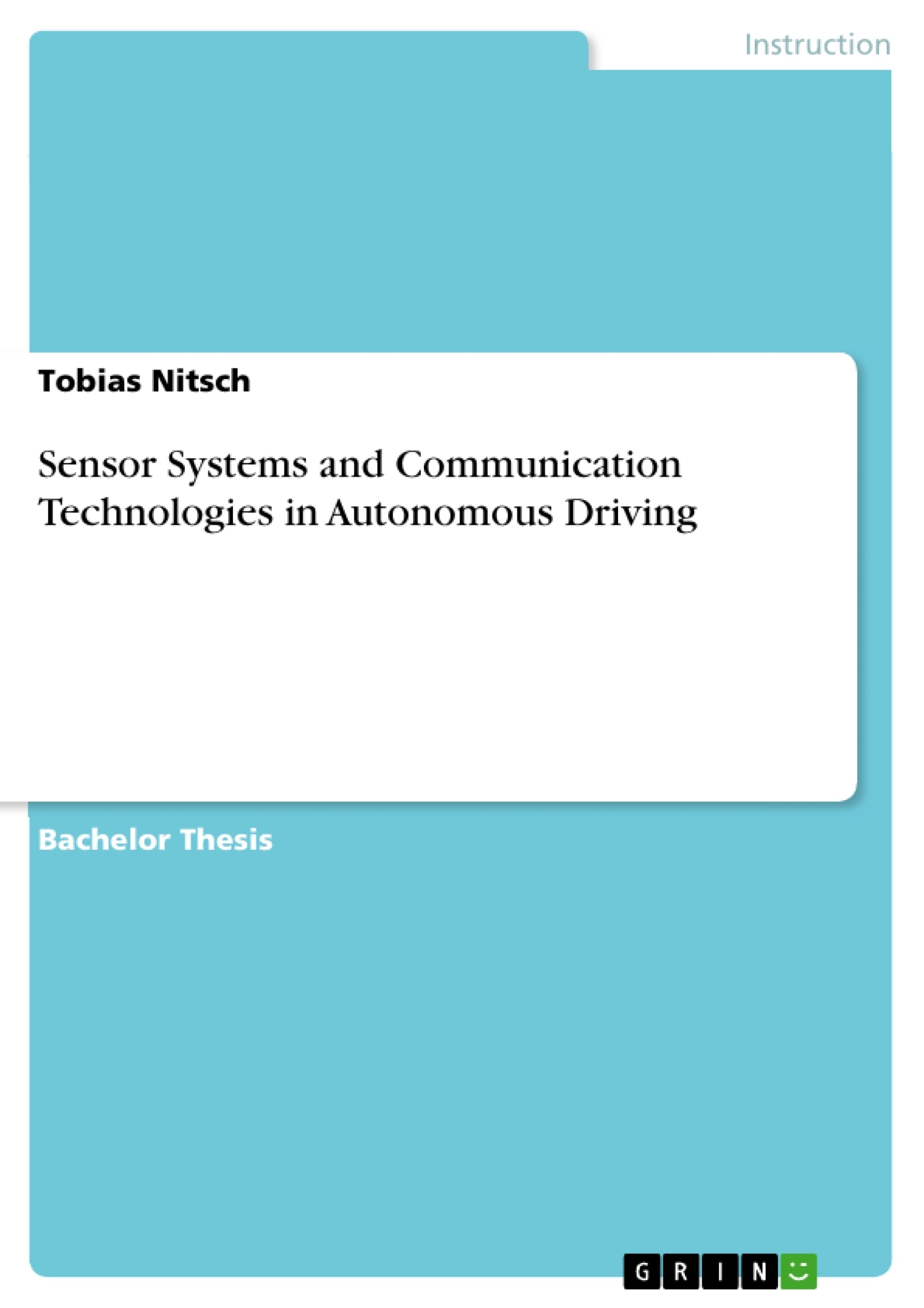In this bachelor thesis an overview of autonomous vehicles and the function inside the automobile is given. Besides the technical implementation, potentials and challenges have to be exposed. The vision of accident free driving stands behind the idea of self-controlled vehicles.
Assistant systems will be enhanced year after year with the objective of autonomous driving. Different sensor systems (RADAR, LIDAR, camera, infrared, etc.) have to be distinguished which are obstructed depending on the operation area.
The requirements to the communication system will obviously increase by a rising number of sensors and the information which have to be transferred in the vehicle. The communication systems have to be balanced to decide which is the best and the cheapest one to meet the requirements.
This thesis was written aiming at imparting knowledge to the reader what does an autonomous vehicle mean, which sensor systems and communication systems are there and which norm is deployed in the automobile industry. It is important to interfere the information detailed, but still easy.
Inhaltsverzeichnis (Table of Contents)
- Introduction.
- General Facts of Autonomous Driving.
- Definition.
- Classification
- Functionality
- Potentials and Challenges.
- Social Factors.
- Ecological Factors
- Economic Factors
- Challenges.
- State of the Art of Autonomous Driving
- Technical Realisation.
- Sensor Systems..
- Ultrasonic Sound
- Cameras
- Radar (Radio Detection and Ranging)..
- Infrared
- LIDAR (Light Detection and Ranging)
- Comparison of Different Sensor Systems .....
- Vehicle Control Unit......
- Communication Systems in the Vehicle.
- Classification
- Composition.......
- ISO 9141-K-Line....
- LIN (Local Interconnect Network)
- CAN (Controller Area Network).
- FlexRay
- MOST
- Sensor Systems..
- ISO 26262
- Application Area
- Technical Realisation.
- Content
Zielsetzung und Themenschwerpunkte (Objectives and Key Themes)
The purpose of this bachelor thesis is to provide a comprehensive overview of autonomous vehicles, focusing on the technical implementation, potentials, and challenges associated with their development. The thesis aims to inform the reader about the different sensor systems and communication systems used in autonomous vehicles, as well as the relevant norms in the automotive industry.
- Autonomous driving technology and its implementation
- Sensor systems in autonomous vehicles
- Communication systems in autonomous vehicles
- Potential benefits and challenges of autonomous driving
- Relevant norms and standards in the automotive industry
Zusammenfassung der Kapitel (Chapter Summaries)
The first chapter introduces the concept of autonomous driving and provides a general overview of its definition, classification, functionality, and potentials. This chapter also discusses the challenges associated with autonomous driving, including social, ecological, and economic factors.
The second chapter delves into the technical realization of autonomous driving, focusing on the sensor systems and communication systems used in vehicles. The different types of sensor systems, such as ultrasonic sound, cameras, radar, infrared, and LIDAR, are described in detail, along with their advantages and limitations. This chapter also explores various communication systems used in vehicles, including ISO 9141-K-Line, LIN, CAN, FlexRay, and MOST.
The third chapter examines the ISO 26262 standard, its application area, and its relevance to autonomous driving.
Schlüsselwörter (Keywords)
Autonomous driving, autonomous vehicle, sensor systems, communication systems, vehicle control unit, ISO 26262, automotive industry, safety, functionality, challenges, potentials.
- Quote paper
- BSc Tobias Nitsch (Author), 2017, Sensor Systems and Communication Technologies in Autonomous Driving, Munich, GRIN Verlag, https://www.grin.com/document/416119



